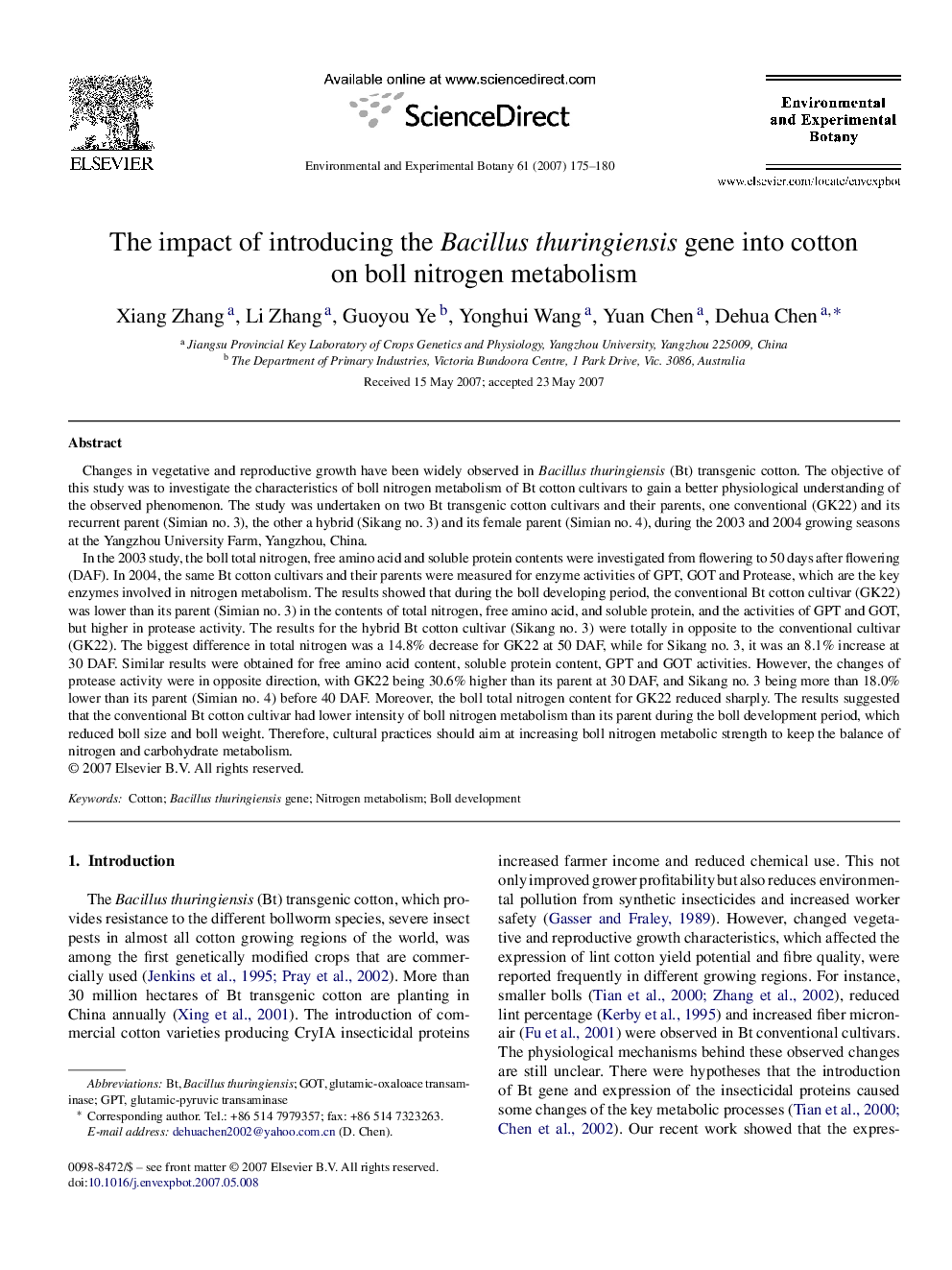| کد مقاله | کد نشریه | سال انتشار | مقاله انگلیسی | نسخه تمام متن |
|---|---|---|---|---|
| 4555493 | 1329261 | 2007 | 6 صفحه PDF | دانلود رایگان |

Changes in vegetative and reproductive growth have been widely observed in Bacillus thuringiensis (Bt) transgenic cotton. The objective of this study was to investigate the characteristics of boll nitrogen metabolism of Bt cotton cultivars to gain a better physiological understanding of the observed phenomenon. The study was undertaken on two Bt transgenic cotton cultivars and their parents, one conventional (GK22) and its recurrent parent (Simian no. 3), the other a hybrid (Sikang no. 3) and its female parent (Simian no. 4), during the 2003 and 2004 growing seasons at the Yangzhou University Farm, Yangzhou, China.In the 2003 study, the boll total nitrogen, free amino acid and soluble protein contents were investigated from flowering to 50 days after flowering (DAF). In 2004, the same Bt cotton cultivars and their parents were measured for enzyme activities of GPT, GOT and Protease, which are the key enzymes involved in nitrogen metabolism. The results showed that during the boll developing period, the conventional Bt cotton cultivar (GK22) was lower than its parent (Simian no. 3) in the contents of total nitrogen, free amino acid, and soluble protein, and the activities of GPT and GOT, but higher in protease activity. The results for the hybrid Bt cotton cultivar (Sikang no. 3) were totally in opposite to the conventional cultivar (GK22). The biggest difference in total nitrogen was a 14.8% decrease for GK22 at 50 DAF, while for Sikang no. 3, it was an 8.1% increase at 30 DAF. Similar results were obtained for free amino acid content, soluble protein content, GPT and GOT activities. However, the changes of protease activity were in opposite direction, with GK22 being 30.6% higher than its parent at 30 DAF, and Sikang no. 3 being more than 18.0% lower than its parent (Simian no. 4) before 40 DAF. Moreover, the boll total nitrogen content for GK22 reduced sharply. The results suggested that the conventional Bt cotton cultivar had lower intensity of boll nitrogen metabolism than its parent during the boll development period, which reduced boll size and boll weight. Therefore, cultural practices should aim at increasing boll nitrogen metabolic strength to keep the balance of nitrogen and carbohydrate metabolism.
Journal: Environmental and Experimental Botany - Volume 61, Issue 2, November 2007, Pages 175–180